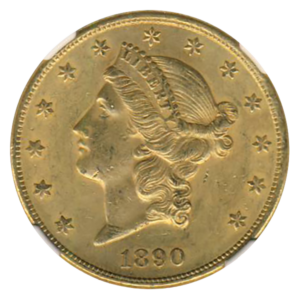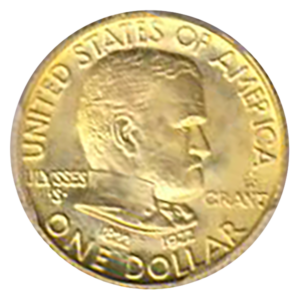1882 Morgan $1 NGC MS64
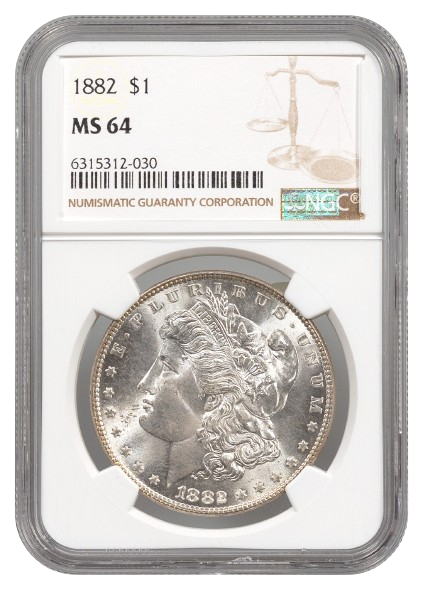


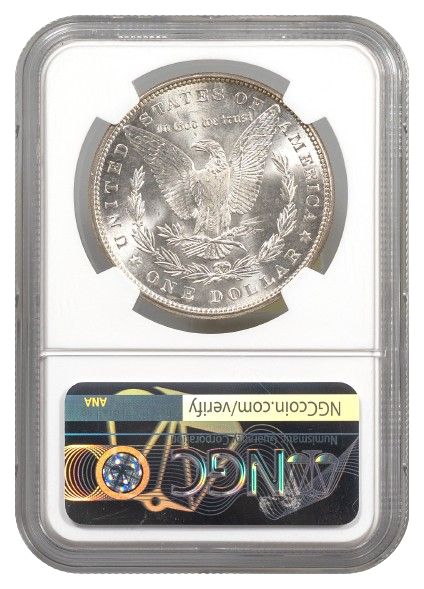

Silver dollar coins were first struck by the United States Mint in 1794. They were struck through 1803 and in 1834 a handful of 1804-dated coins were struck for Asian dignitaries. Silver dollar coins were then struck from 1840 through 1873.
The Coinage Act of 1873, which was proposed and supported by [proponents of a Gold Standard. This Act eliminated the silver dollar coin from being struck any further. No longer could silver miners turn their silver ore into silver dollar coins through the Mint.
But with the passage of the Bland-Allison Act of 1878, this law reestablished the silver dollar coin. The proponents of this legislation were Western farmers, merchants, and those in the silver mining business. Even more importantly the Secretary of the Treasury was mandated to purchase $2 million dollars of newly mined silver from these same Western mines. Now silver dollar coins would be stuck by the millions into the future.
These new silver dollar coins were struck in 1878 and struck annually through 1904. Because there was a shortage of silver after World War I, these same silver dollar coins were struck for one additional year - in 1921.
George T. Morgan, who was the Assistant Chief Engraver of the United States Mint, created designs for both sides of this coin.
His obverse design depicted a mature Miss Liberty, facing to the left. She wore a slave cap, also called a Phrygian cap, on her head, as well as a crown made of cotton and wheat. She wore a headband upon which the word “LIBERTY,” had been inscribed. On the upper periphery of the obverse is inscribed “E PLURIBUS UNUM.” The date of striking the coin was placed on the lower periphery. In between that motto and the date were thirteen six-pointed stars – seven on the left side, six on the right.
His reverse design displayed an American Bald Eagle, facing to the left. The eagle’s wings are outstretched and raised upward. Placed between the wings, is the motto “IN GOD WE TRUST.” The eagle is centered within an olive wreath. It is holding three arrows in one talon, and an olive branch in her other. On the upper periphery is “UNITED STATES OF AMERICA,” and on the lower periphery is “ONE DOLLAR.”
This coin was dated 1882, and it was struck at the Philadelphia Mint, so there is no mintmark underneath the eagle. The Philadelphia Mint struck 11,100,000 silver dollar coins that year.
This coin is graded as MS64 by the Numismatic Guaranty Corporation (NGC), one of the three most popular grading services in existence.
Simply click the “Add to Cart” button now or call 1-800-880-4653 to speak to one of our highly trained numismatists, who will be happy to assist you.
The Coinage Act of 1873, which was proposed and supported by [proponents of a Gold Standard. This Act eliminated the silver dollar coin from being struck any further. No longer could silver miners turn their silver ore into silver dollar coins through the Mint.
But with the passage of the Bland-Allison Act of 1878, this law reestablished the silver dollar coin. The proponents of this legislation were Western farmers, merchants, and those in the silver mining business. Even more importantly the Secretary of the Treasury was mandated to purchase $2 million dollars of newly mined silver from these same Western mines. Now silver dollar coins would be stuck by the millions into the future.
These new silver dollar coins were struck in 1878 and struck annually through 1904. Because there was a shortage of silver after World War I, these same silver dollar coins were struck for one additional year - in 1921.
George T. Morgan, who was the Assistant Chief Engraver of the United States Mint, created designs for both sides of this coin.
His obverse design depicted a mature Miss Liberty, facing to the left. She wore a slave cap, also called a Phrygian cap, on her head, as well as a crown made of cotton and wheat. She wore a headband upon which the word “LIBERTY,” had been inscribed. On the upper periphery of the obverse is inscribed “E PLURIBUS UNUM.” The date of striking the coin was placed on the lower periphery. In between that motto and the date were thirteen six-pointed stars – seven on the left side, six on the right.
His reverse design displayed an American Bald Eagle, facing to the left. The eagle’s wings are outstretched and raised upward. Placed between the wings, is the motto “IN GOD WE TRUST.” The eagle is centered within an olive wreath. It is holding three arrows in one talon, and an olive branch in her other. On the upper periphery is “UNITED STATES OF AMERICA,” and on the lower periphery is “ONE DOLLAR.”
This coin was dated 1882, and it was struck at the Philadelphia Mint, so there is no mintmark underneath the eagle. The Philadelphia Mint struck 11,100,000 silver dollar coins that year.
This coin is graded as MS64 by the Numismatic Guaranty Corporation (NGC), one of the three most popular grading services in existence.
Simply click the “Add to Cart” button now or call 1-800-880-4653 to speak to one of our highly trained numismatists, who will be happy to assist you.
| Specifications | |
| Year | 1882 |
| Denomination | One Dollar |
| Grade | MS64 |
| Country | United States of America |
| Grading Service | NGC |
| Weight | .77344 |
| Fineness | .900 Fine Silver |
| Diameter | 38.1 mm |
| Manufacturer | The United States Mint |





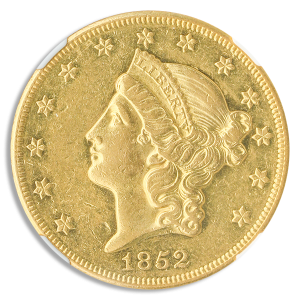
 Quick View
Quick View